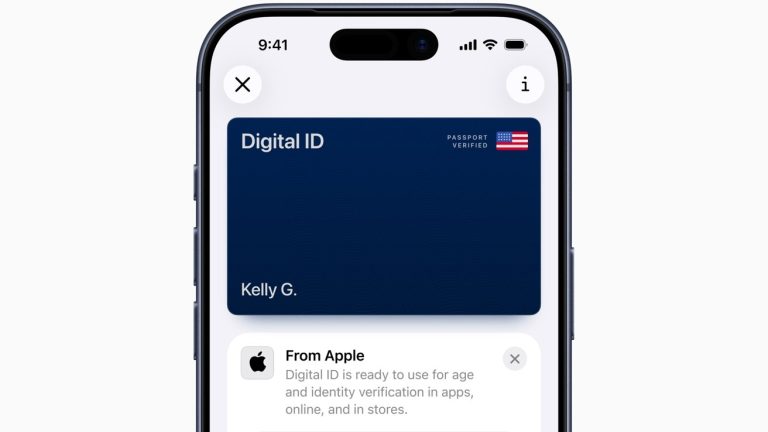Passports on iPhone debut with Apple Digital ID
The new Passports on iPhone feature expands Apple Wallet’s identity options by allowing users to turn their U.S. passport into a secure Digital ID stored directly on an iPhone or Apple Watch. Apple aims to simplify domestic travel, and this upgrade introduces a faster, more convenient verification method for millions of travelers.
How Apple’s Digital ID Works
Apple’s Digital ID process lets users create a verified passport-based identity within Wallet through a simple setup flow. First, the user scans the passport with the device’s camera. Next, they read the passport’s chip using NFC, and finally, they complete a facial verification selfie. After the setup, the Digital ID becomes available through the standard double-tap gesture used for Apple Pay.
Once added, the Digital ID works at more than 250 TSA checkpoints across the United States. Travelers can display their identity at these airport stations without removing a physical passport. Although useful and fast, the feature still has limits. It only works for domestic travel and cannot replace the physical passport at international borders. Even so, the system introduces a new level of flexibility for people who rely heavily on Apple’s ecosystem.
Apple Pay and Wallet Vice President Jennifer Bailey highlighted how users embraced digital licenses and praised the convenience of having identification on their devices. She noted that Digital ID extends that convenience to U.S. passport holders nationwide.
Read Also
- Apple Smart Glasses
- iPhone 17 Pro and iPhone Air Durability Tested
- Apple Foldable iPhone
- Taliban Cuts Internet and Phone Services Across Afghanistan
Security and Privacy Features
Apple designed the Digital ID to protect user privacy at every step. All identity data stays encrypted on the device and cannot be seen or tracked by Apple. Each verification request requires Face ID or Touch ID, which prevents unauthorized access. Additionally, Apple shares only the information needed for that specific request, reducing data exposure.
These protections match the security standards used by Apple Pay, giving users confidence when presenting sensitive information. Because Digital ID operates entirely under user control, it reduces risks associated with physical documents, such as theft or misplacement.
How to Set Up Passports on iPhone
The setup process is straightforward. Users open Apple Wallet, tap Add, choose Driver’s License or ID Cards, and then select Digital ID. After selecting the option, the app walks users through capturing a passport photo, scanning the NFC chip, and completing a quick selfie. Once verification succeeds, the Digital ID becomes ready for use.
From that point, travelers can present their passport information by double-tapping the iPhone’s side button. This process mirrors Apple Pay, which makes it easy and familiar even for first-time users.
A Step Toward Broader Digital Identity
Apple previewed Passports on iPhone during WWDC 2025 as part of the larger iOS 26 Wallet upgrade. The feature also removes the need for a REAL ID–compliant license, giving anyone with a valid U.S. passport a path to digital identification. This wider accessibility moves Apple deeper into the digital identity space and positions the company at the front of a growing movement toward mobile-first verification.
Although limited to domestic travel today, the technology shows clear potential for future expansion. Governments and private organizations continue exploring secure digital identification systems. Because of that, Apple’s early rollout may influence how digital IDs evolve across the world.
Passports on iPhone marks an important shift toward a more convenient and secure identity future. As adoption grows, users may eventually rely on their devices instead of traditional wallets for essential identification.

